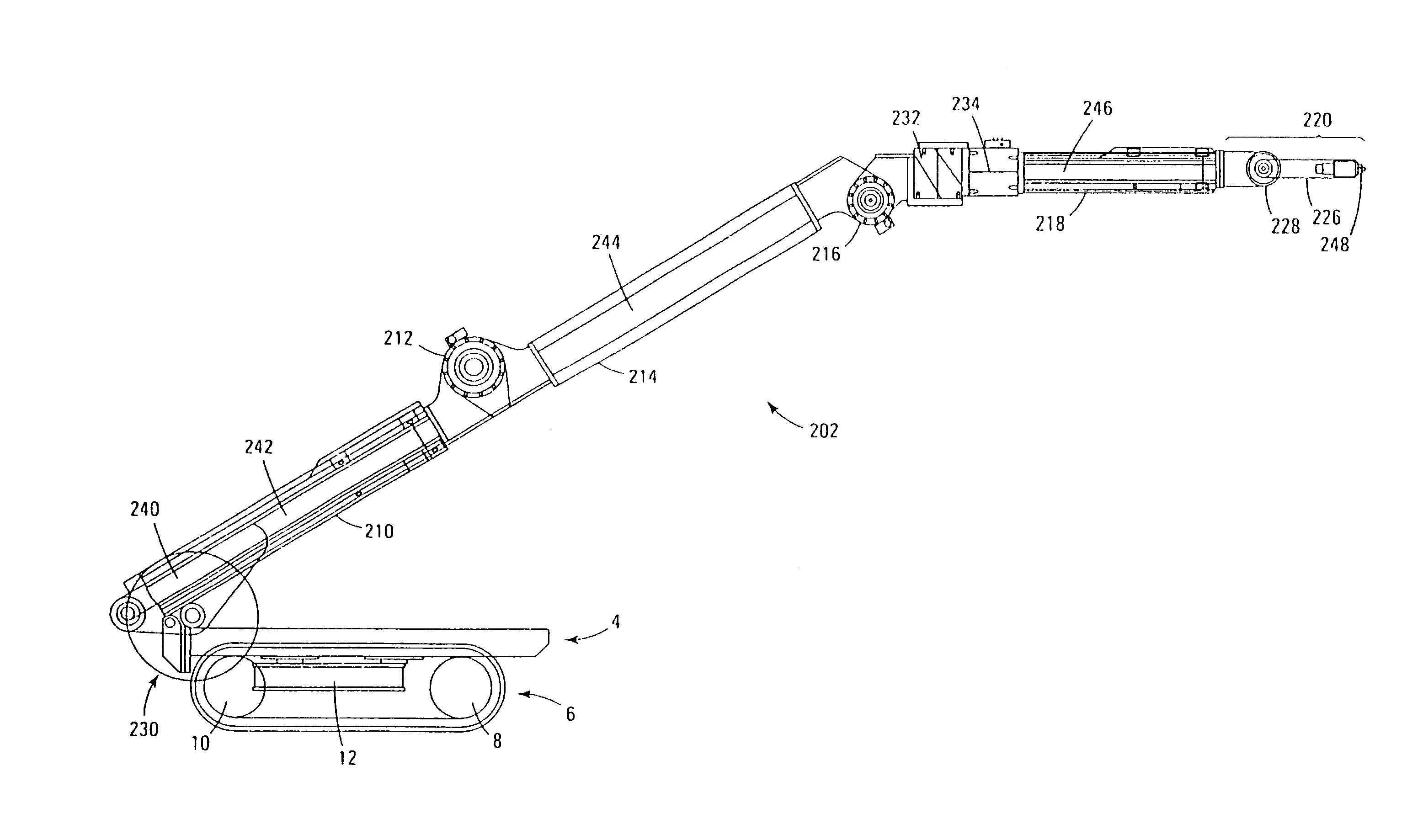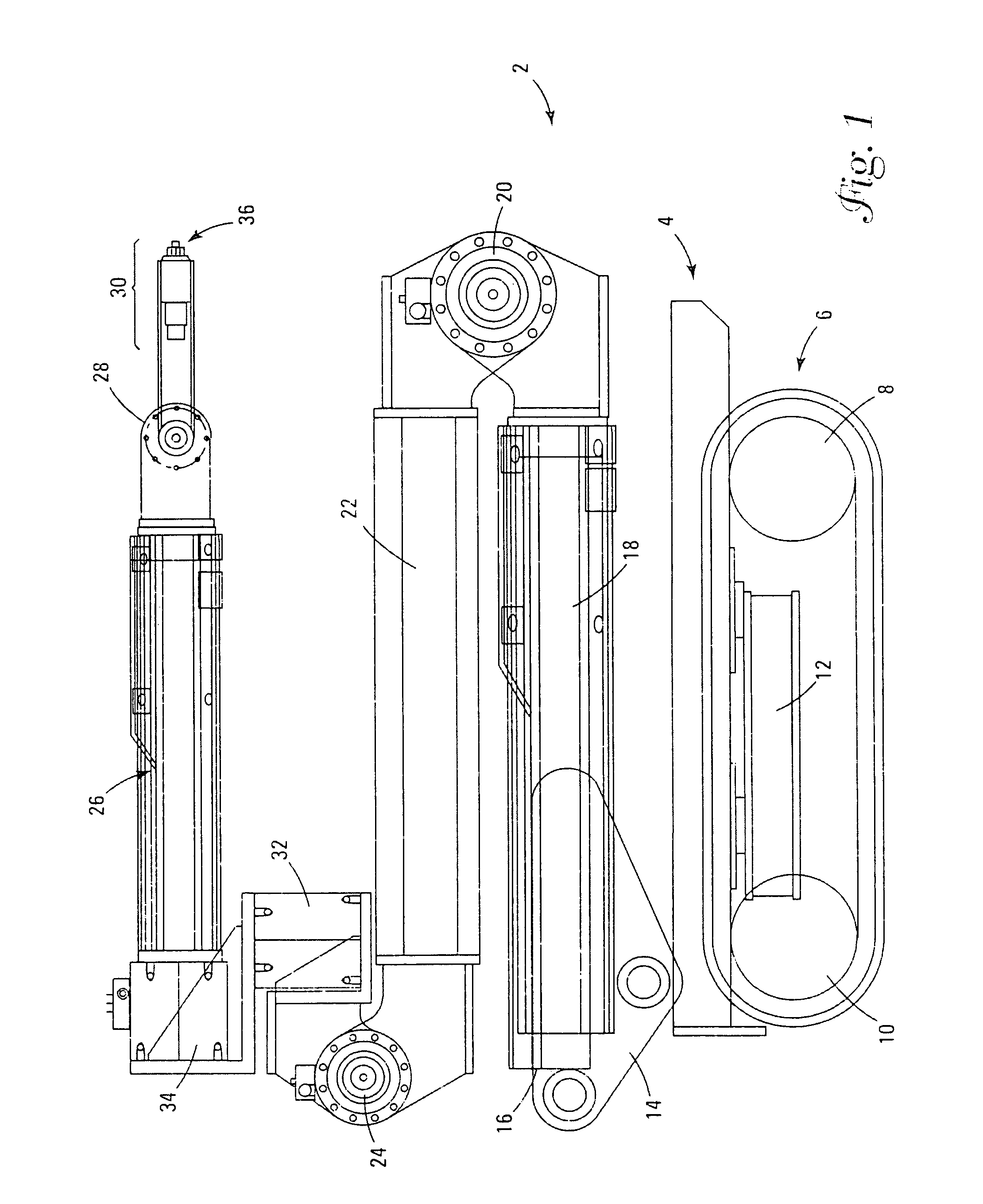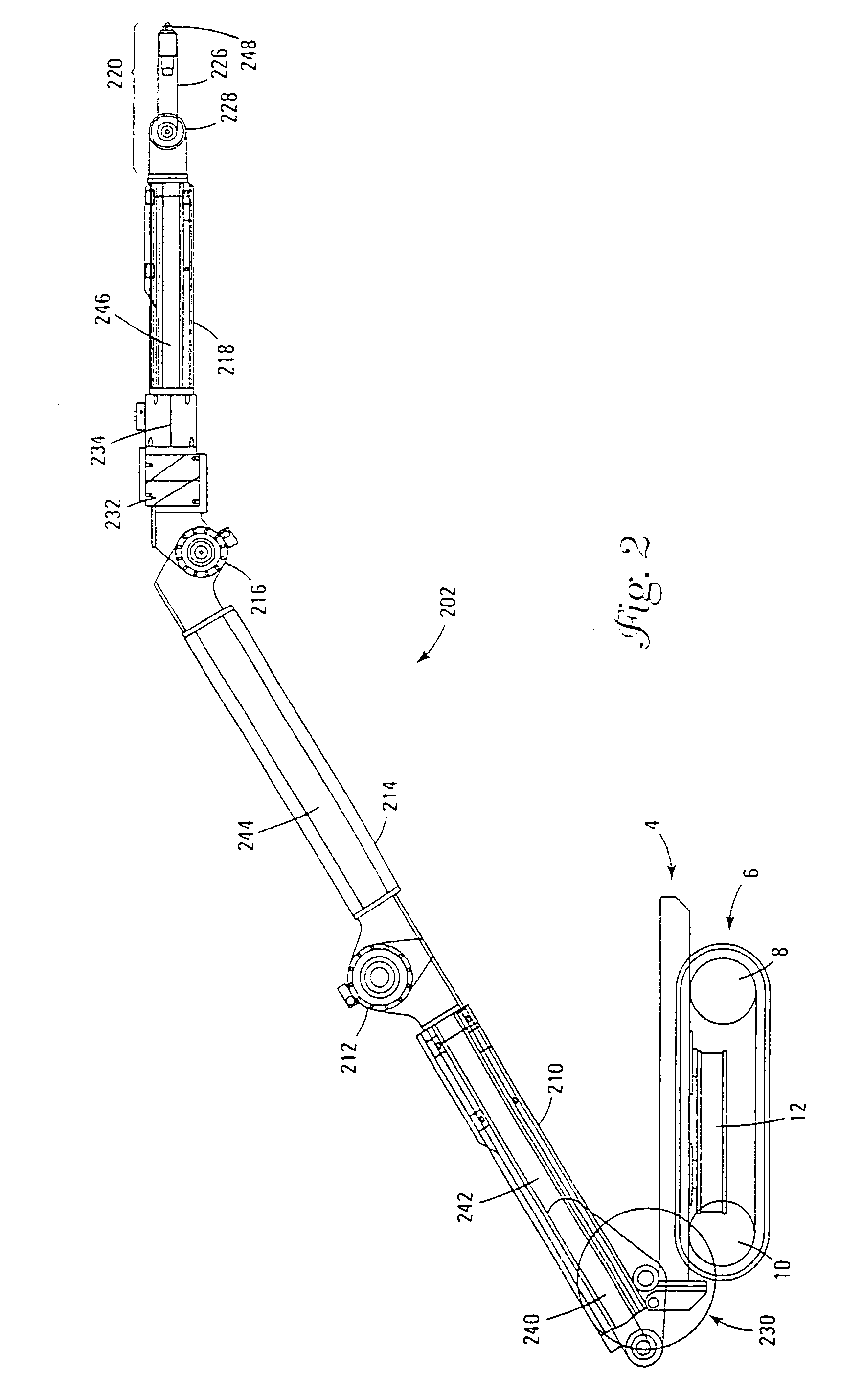On-site land mine removal system
a land mine removal and on-site technology, applied in the direction of offensive equipment, launching weapons, transportation and packaging, etc., to achieve the effect of reducing the effectiveness of land mines, reducing or eliminating slag or burr, and high quality cuts
- Summary
- Abstract
- Description
- Claims
- Application Information
AI Technical Summary
Benefits of technology
Problems solved by technology
Method used
Image
Examples
Embodiment Construction
[0075]A process for the in situ and on-site deactivation of land mines comprises at least one high-pressure water jet that is directed against the ground to remove cover from the land mine and (subsequently or simultaneously) cut through the land mine, deactivating the mine or reducing its effective capability. The water jet or a series of waterjets is moved over the surface area to be cleared of mines, tracing a path or series of paths that will intersect at positions that will overlap a high percentage of mines, hopefully one hundred percent of mines. If there is foreknowledge of the type of mines available or buried in an area to be cleared, the spacing or movement of the water jets may be tailored for those particular mines. If there is no basis for anticipating the specific type or size of mines present, the water jets may be spaced to assure contact with all known dimensions for mines, which is a minimum diameter of about 7.5 cm. Thus the water jets may be spaced at a minimum ...
PUM
 Login to View More
Login to View More Abstract
Description
Claims
Application Information
 Login to View More
Login to View More - R&D
- Intellectual Property
- Life Sciences
- Materials
- Tech Scout
- Unparalleled Data Quality
- Higher Quality Content
- 60% Fewer Hallucinations
Browse by: Latest US Patents, China's latest patents, Technical Efficacy Thesaurus, Application Domain, Technology Topic, Popular Technical Reports.
© 2025 PatSnap. All rights reserved.Legal|Privacy policy|Modern Slavery Act Transparency Statement|Sitemap|About US| Contact US: help@patsnap.com



